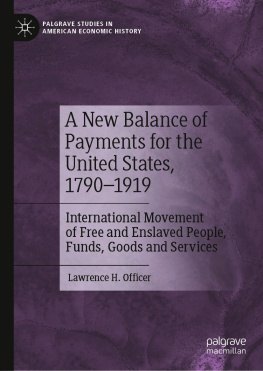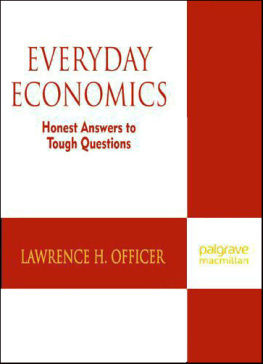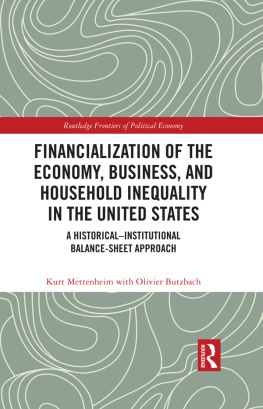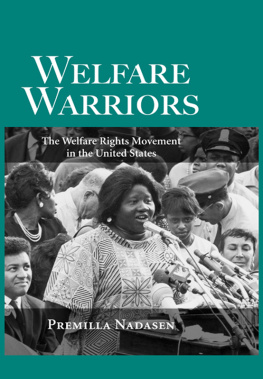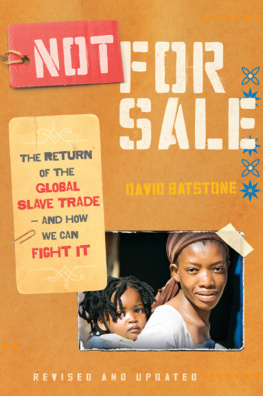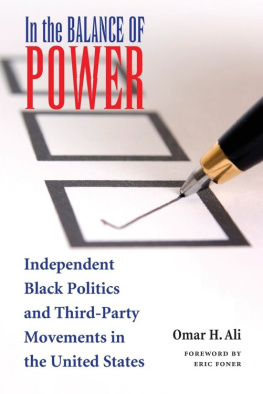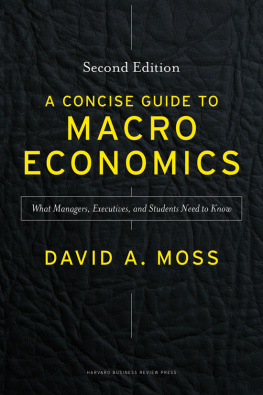Lawrence H. Officer - A New Balance of Payments for the United States, 1790–1919: International Movement of Free and Enslaved People, Funds, Goods and Services
Here you can read online Lawrence H. Officer - A New Balance of Payments for the United States, 1790–1919: International Movement of Free and Enslaved People, Funds, Goods and Services full text of the book (entire story) in english for free. Download pdf and epub, get meaning, cover and reviews about this ebook. City: Cham, year: 2021, publisher: Palgrave Macmillan, genre: History / Science. Description of the work, (preface) as well as reviews are available. Best literature library LitArk.com created for fans of good reading and offers a wide selection of genres:
Romance novel
Science fiction
Adventure
Detective
Science
History
Home and family
Prose
Art
Politics
Computer
Non-fiction
Religion
Business
Children
Humor
Choose a favorite category and find really read worthwhile books. Enjoy immersion in the world of imagination, feel the emotions of the characters or learn something new for yourself, make an fascinating discovery.
- Book:A New Balance of Payments for the United States, 1790–1919: International Movement of Free and Enslaved People, Funds, Goods and Services
- Author:
- Publisher:Palgrave Macmillan
- Genre:
- Year:2021
- City:Cham
- Rating:5 / 5
- Favourites:Add to favourites
- Your mark:
A New Balance of Payments for the United States, 1790–1919: International Movement of Free and Enslaved People, Funds, Goods and Services: summary, description and annotation
We offer to read an annotation, description, summary or preface (depends on what the author of the book "A New Balance of Payments for the United States, 1790–1919: International Movement of Free and Enslaved People, Funds, Goods and Services" wrote himself). If you haven't found the necessary information about the book — write in the comments, we will try to find it.
This book develops new balance of payments statistics for the United States from 1790 to 1919, before official statistics were kept. Part I of this book justifies construction of a new balance of payments table, and Chapter 1 surveys existing tables from that standpoint. Chapter 2 shows how this book overcomes the limitations of Office of Business Economics and its North-Simon-Goldsmith foundation. Specific features are highlighted, including measurement decisions, improvement of OBE series, development of new series, and derived implications for the structure of the US economy and for the importance of individual sectors that loom large at various times: slave trade, shipping, manufacturing, and travel. The book then generates new time series of the movement of people, the movement of goods, the movement of funds, and the provision of services. Part VI puts the new balance of payments table to use in several ways: aggregates and balances within the table, structure of the US economy, and specific sectors of the economy (slave trade, shipping, manufacturing, travel). Finally, Part VII provides concluding comments.
Lawrence H. Officer: author's other books
Who wrote A New Balance of Payments for the United States, 1790–1919: International Movement of Free and Enslaved People, Funds, Goods and Services? Find out the surname, the name of the author of the book and a list of all author's works by series.

